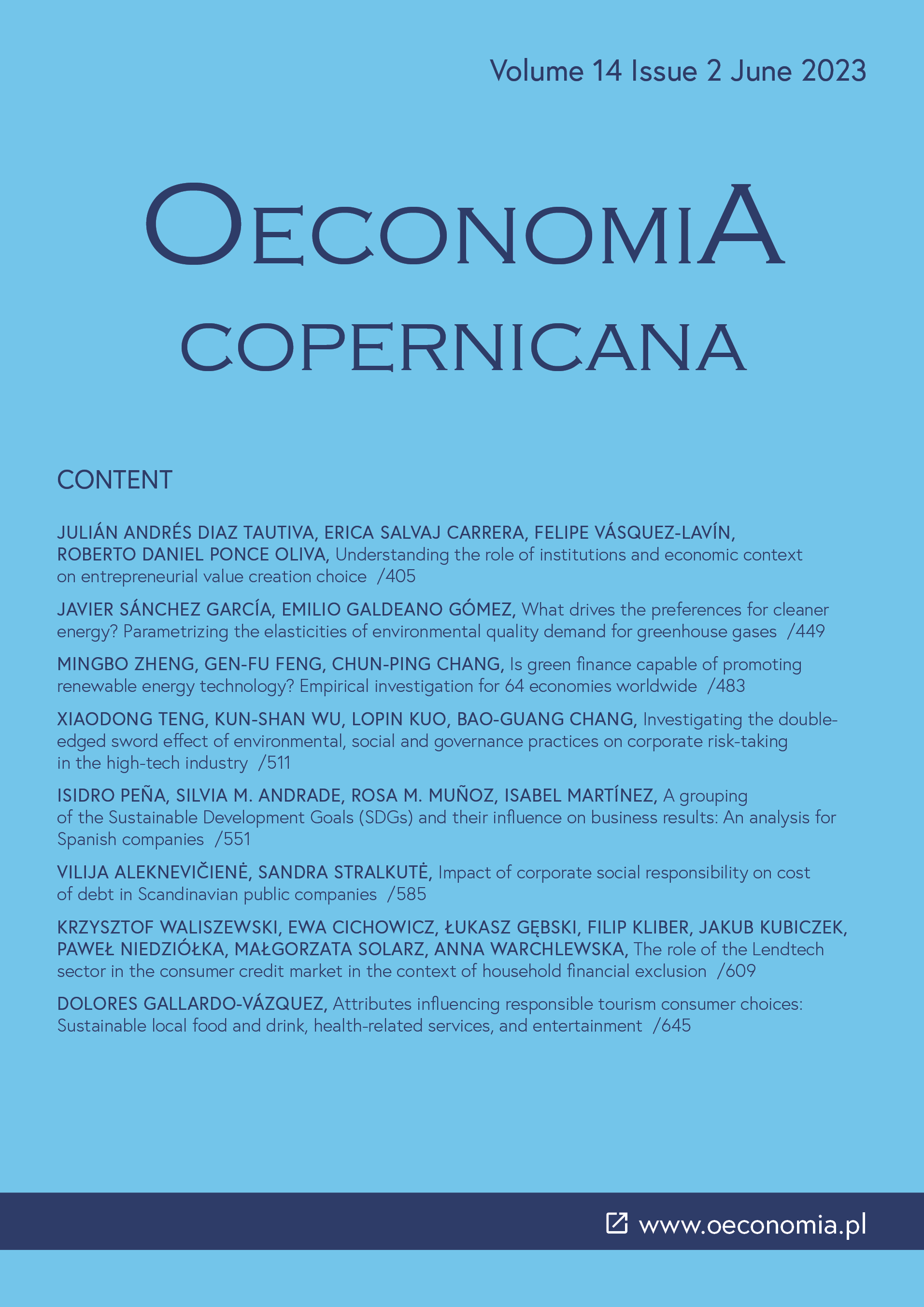What drives the preferences for cleaner energy? Parametrizing the elasticities of environmental quality demand for greenhouse gases
What drives the preferences for cleaner energy? Parametrizing the elasticities of environmental quality demand for greenhouse gases
Author(s): Javier Sánchez García, Emilio Galdeano GómezSubject(s): Energy and Environmental Studies, Environmental and Energy policy, Social development
Published by: Instytut Badań Gospodarczych
Keywords: leaner energy; environmental demand elasticity; business enterprises R+D; exposure to air pollution;
Summary/Abstract: Research background: The heterogeneity in the factors that affect demand for environmental quality implicates a diverse set of policies and actions aimed at achieving cleaner production to address the challenges posed by pollution and damage to the natural environment. Even though this topic has been widely addressed, mainly from the traditional perspective of the Environmental Kuznets Curves hypothesis (EKC), it has been assumed that the environment is a luxury good with an income elasticity greater than unity. However, it has recently been recognized that the relationship between income and demand for cleaner energy may be more complex and that further inquiry may be needed for a better understanding.Purpose of the article: This research work, employing a panel of European countries, offers direct explicit parameters for the elasticity of income-environmental quality demand for Greenhouse Gases (GHG), as well as its relationship with other important factors. It provides quantitative novel insights into the complex relationship between income and the preferences for cleaner energy.Methods: A hierarchical regression equations approach is used to analyze the evolution of the elasticity of income-environmental quality demand with the inclusion of further co-variates that are relevant for the preferences side of the EKC, such as consumption, R+D investment and BERD (Business Enterprise Research and Development). The data for the empirical study comes from a panel of 16 European countries for the period from 2010 to 2020.Findings & value added: The results show robust evidence that the elasticity of environmental quality demand, which although positive and significant, does not exceed one. To obtain an elasticity above unity, two more variables are needed, namely the R+D expenditure of business enterprises and the exposure of citizens to air pollution. These two factors have a similar or even higher effect on the preferences of agents for cleaner energy, which also means that the preferences of the citizens are endogenous to technological development. At the theoretical level, this work shows that the technological and preferences arguments are not substitute explanations of the EKC, but that technological development exerts a positive effect on the preferences of inhabitants, whose demand for environmental quality is heavily conditioned by their capabilities to see pollution, even more than by their income level. This also means that public policies directed to improve environmental awareness should be directed first towards those regions where the exposure of the citizens to pollution is lower.
Journal: Oeconomia Copernicana
- Issue Year: 14/2023
- Issue No: 2
- Page Range: 449-482
- Page Count: 34
- Language: English

